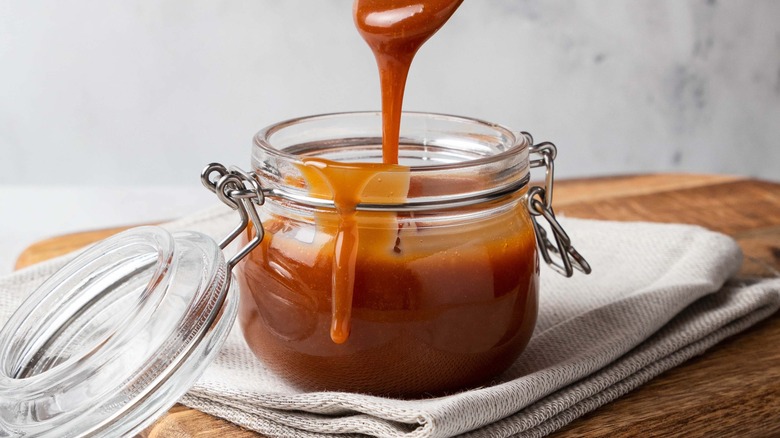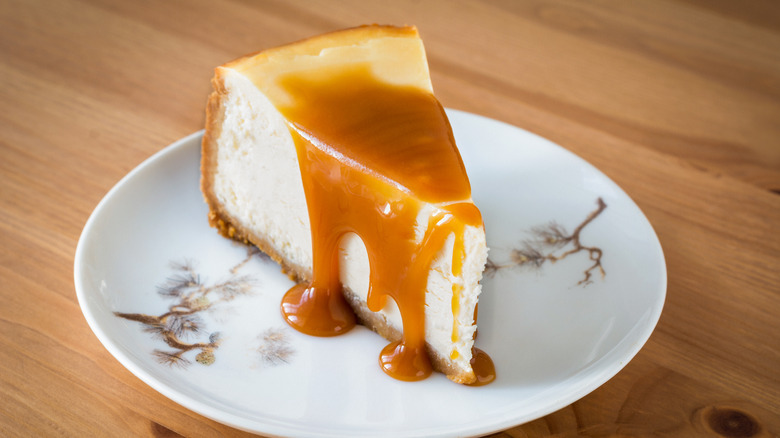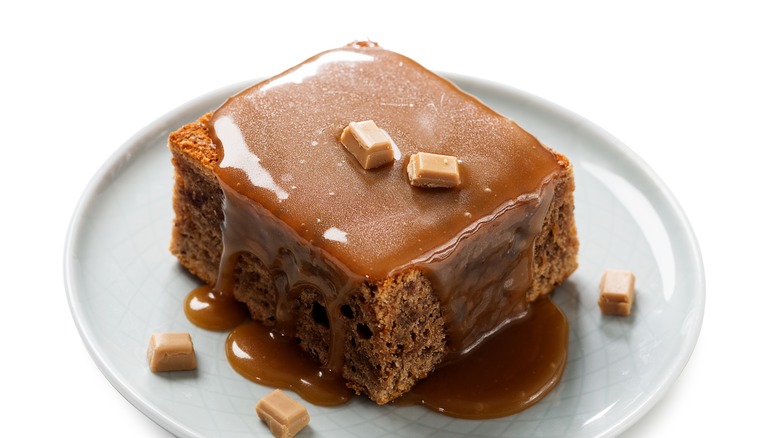Caramel Vs. Butterscotch: What's The Difference?
Who doesn't good dessert, whether that be a dark chocolate brownie or a creamy scoop of vanilla ice cream, we all must satisfy our sweet tooth in one way or another. But we can agree that sometimes our desserts could all stand to have a little extra oomph added to them. It could be a gentle dusting of powdered sugar, fresh-cut strawberries, or our personal favorite, sweet sauces.
What are sweet sauces exactly? Well, Southern Living describes them as dessert upgrades! They include things like strawberry drizzle, praline sauce, vanilla glaze, and warm chocolate and fudge sauce to drip over the top of your favorite desserts to add another layer of flavor and a bit of flash, but some all-time favorite sweets to add to any dessert are caramel and butterscotch.
It could be easy for the untrained tastebud to mistake caramel and butterscotch for one another. They are both dark gold-brown in appearance and are both warm, buttery, and sweet. But there is a significant difference between the two that, much like the toppings over sweet treats, we're about to lay on you.
What is Caramel?
Caramel is actually quite old! According to Mountainland Caramel Co., caramel may have been invented as long ago as 1,000 A.D. by those living in the Arab world. There is evidence of hard candies being made with similar ingredients that were referred to as "balls of sweet." The caramel base was long made only with sugar and water, but around 1860 A.D., milk and fat were added into the mix, making the version of the caramel candy we recognize today.
Since then, the ingredients for caramel haven't changed much. MasterClass says that in most cases, it's made from white sugar, mixed with heavy cream, and vanilla, and sometimes, sea salt. The caramel can be made into a firm and chewy candy or turned into a silky sauce depending on the temperature at which it's boiled.
To make caramel candies, Webstaurant Store says to carefully heat white sugar to 340°Fahrenheit until it browns, then add other ingredients such as butter, milk, or vanilla to soften the texture and give it some additional flavor. Caramel syrup is made with the same ingredients, but you must keep the heat around 230 degrees Fahrenheit, constantly stir the sugar mixture, and remove it from the heat before it hardens.
What is butterscotch?
Butterscotch is a different kind of sweet, made in a similar way, but a bit easier to handle. Bakerpedia tells us that butterscotch was first coined in the early 19th century by a candy maker, Samuel Parkinson. He received the Royal Seal of Approval for his sweet creation and butterscotch became a supremely popular hard candy as well as a sauce to spread over baked goods and ice cream. Like caramel, it was commonly mixed with sea salt to make the flavor pop.
According to Bon Appétit, butterscotch, like caramel, is made using sugar; however, instead of white granulated sugar, butterscotch uses raw dark brown sugar. The brown sugar has a deeper color and richer flavor to lend to the sweet and tends to be moister than caramel and is, therefore, harder to burn. It is made with many of the same ingredients as caramel, including butter and cream, but the way the sugar responds to the heat makes this particular candy easier to make for first-timers are less likely to be left with a burning pile of sugar on their hands.


